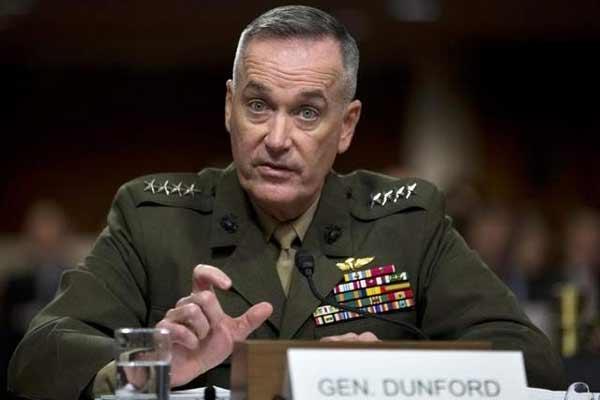The commander of U.S. and allied forces in Afghanistan on Wednesday outlined the costs and pace of the current plan to withdraw U.S. troops by December 2014.
“We’re in pretty good shape” in the advance planning for the “retrograde” of hundreds of thousands of pieces of U.S. gear and equipment, said Marine Gen. Joseph Dunford, commander of U.S. and coalition forces in Afghanistan, but he could not give a firm estimate on the cost.
If the southern land routes through Pakistan remain open, the cost of the equipment retrograde would be about $4 billion, Dunford said in testimony to the House Armed Services Committee. But if political problems and Taliban attacks close the Pakistan land routes, the cost of getting the equipment out will balloon to $6 billion, Dunford said.
“These next two months will be critical” in determining the reliability of the Pakistan land routes to ships waiting at the port of Karachi, he said. The International Security Assistance Force has worked out procedures for getting allied convoys past checkpoints and through customs, Dunford said. However, it remained to be seen whether the agreements would stick.
The withdrawal from Afghanistan was far more problematic than the pullout from Iraq, he said, although getting the equipment out “is not one of the areas where I lay awake at night.”
"In Iraq, we had Kuwait” on the border to serve as a staging area and shipment point, Dunford said. “In Afghanistan, the degree of difficulty is significantly greater.”
About 80 percent of U.S. bases in Afghanistan have already been closed or turned over to the Afghan National Security Forces, he said, but the job of getting them shut down won’t be completed by December 2014.
“Some base closures will take place after 2014,” at an additional cost for which he did not immediately provide an estimate.
Dunford also did not have an estimate on the cost of maintaining and refurbishing the well-worn equipment withdrawn from Afghanistan once it arrives in the U.S.
As he had the day before in testimony to the Senate Armed Services Committee, Dunford declined to be pinned down on the number of troops he would recommend that President Obama agree to keep in Afghanistan after December 2014. Dunford said he would prefer to give the estimate in the fall, after gauging how the Afghan forces handle the summer of taking the lead for security.
The ANSF were on track to assume lead responsibility for security in all areas of Afghanistan later this spring, Dunford said, but major problems for the army and police will persist well past the December 2014 deadline for the withdrawal of NATO forces.
Dunford was particularly concerned about the ill-equipped and trained Afghan air force, which “will require increased capability and capacity going into 2015 due to late equipment fielding, contracting problems, and personnel shortfalls. ISAF currently predicts that this gap will exist through 2016,” he said.
Dunford said he has also taken a personal interest in breaking the logjam with the State Department on getting visas for the estimated 8,000 Afghan interpreters working with U.S. forces that would allow them to come to the United States.
The interpreters increasingly have been targeted for attack by the Taliban as allied forces withdraw. Dunford said he was pressing the State Department to get visas for the interpreters “as expeditiously as possible.”





























